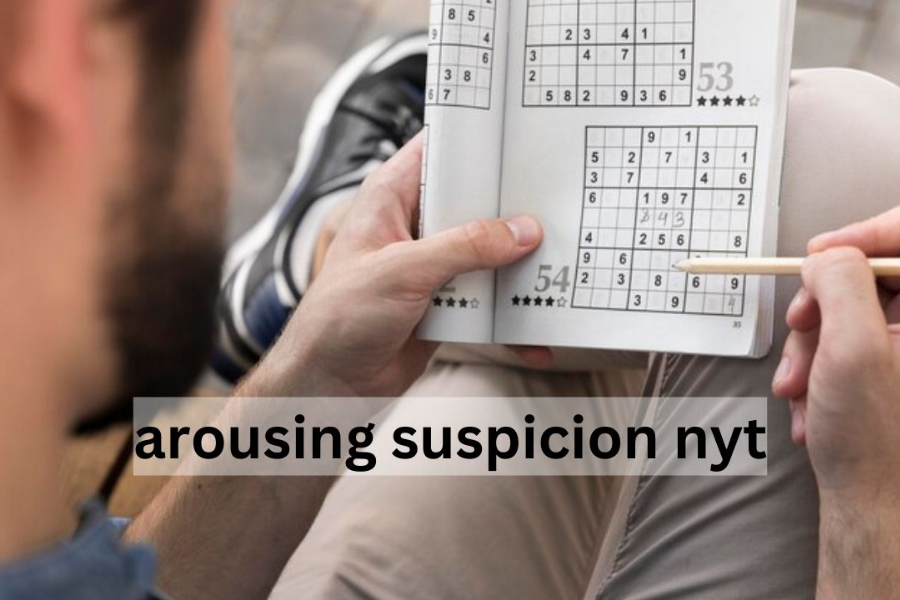The New York Times Crossword Puzzle is more than just a game; it’s a cherished ritual for enthusiasts who approach it with a blend of curiosity and intellect. Each week, this puzzle provides a unique challenge, inviting solvers to decode clues that test their vocabulary and wit. Among the many intriguing entries lies one particularly compelling clue: “arousing suspicion.” This clue often sparks curiosity and exploration as players attempt to uncover its meaning and the word it signifies. In this article, we will delve into the significance of this clue, its context within crossword puzzles, and explore why it resonates so strongly with solvers.
The Clue: Arousing Suspicion NYT
The New York Times Crossword Puzzle is renowned for its ability to challenge and engage players through creative and thought-provoking clues. The clue “arousing suspicion” is a prime example of how these puzzles can lead solvers on a journey of linguistic discovery. At first glance, it might seem like a straightforward request for a synonym. However, crossword clues often demand more than a simple match of words; they require solvers to consider context, nuance, and connotation.
When presented with the clue “arousing suspicion,” solvers are encouraged to think beyond the literal. It’s not merely about finding a word that means “suspicion” but rather understanding the subtle implications of something that stirs doubt or unease. This clue is a test of not just vocabulary but also interpretive skills, challenging players to connect abstract concepts with specific words.
The Essence of Suspicion in Crossword Puzzles
To fully appreciate the clue “arousing suspicion,” it’s essential to explore the broader concept of suspicion itself. Suspicion arises when something seems unusual, questionable, or not quite right. It’s a feeling that prompts further investigation or skepticism. In the realm of crossword puzzles, conveying this sense of doubt can be both subtle and powerful.
In crossword puzzles, words and phrases are often chosen for their dual meanings or potential to evoke specific imagery. The clue “arousing suspicion” does just that, inviting solvers to consider how the concept of suspicion can be encapsulated in a single term. This approach adds depth to the puzzle, transforming a simple word search into a more intricate and engaging experience.
The Final Answer: Decoding “Fishy”
After navigating the layers of meaning and context, the final answer to the clue “arousing suspicion” in the New York Times Crossword Puzzle is “fishy.” This term perfectly encapsulates the essence of suspicion, offering a concise and evocative solution to the clue.
The word “fishy” is commonly used to describe situations or circumstances that seem dubious or questionable. When something doesn’t quite add up or appears to be out of the ordinary, it might be described as “fishy.” This term effectively conveys the idea of suspicion without resorting to overt drama or exaggeration. It’s a word that captures the subtlety of doubt and the need for further scrutiny.
The Role of “Fishy” in Everyday Language
Understanding why “fishy” is an apt answer requires a look at how this word is used in everyday language. The term has evolved beyond its literal meaning related to fish and seafood to become a colloquial expression for anything that seems suspicious or off-kilter.
In common usage, “fishy” is often employed to describe scenarios where something feels amiss. For instance, if someone provides an explanation that seems inconsistent or lacks credibility, it might be described as “fishy.” The term’s versatility and informal nature make it an ideal choice for crossword puzzles, where clarity and brevity are essential.
Exploring the Impact of Suspicion in Crossword Puzzles
The clue “arousing suspicion” and its solution “fishy” illustrate how crossword puzzles can serve as a reflection of language and thought. By engaging with such clues, solvers not only enhance their vocabulary but also develop a deeper appreciation for the nuances of language.
Crossword puzzles often use clues that play on words, encourage lateral thinking, and prompt solvers to consider different perspectives. The clue “arousing suspicion” exemplifies this approach, requiring players to connect abstract concepts with concrete answers. This process highlights the intricate relationship between language and perception, demonstrating how words can shape our understanding of complex ideas.
The Broader Significance of Crossword Puzzles
Beyond their role as a form of entertainment, crossword puzzles offer valuable insights into language, culture, and human cognition. They challenge players to think critically, explore linguistic patterns, and engage with diverse themes. The clue “arousing suspicion” serves as a reminder of how puzzles can illuminate the subtleties of communication and thought.
Crossword puzzles also foster a sense of community among enthusiasts. Sharing solutions, discussing strategies, and exploring the meanings behind clues can create connections and conversations among players. The process of solving a puzzle becomes a collaborative and intellectually stimulating experience, enhancing the enjoyment of both individual and group play.
Conclusion
The clue “arousing suspicion” in the New York Times Crossword Puzzle offers a fascinating glimpse into the art of wordplay and linguistic interpretation. Through its final answer, “fishy,” solvers are invited to explore the concept of suspicion and its subtle manifestations. This clue exemplifies the depth and complexity of crossword puzzles, showcasing how language can be used to challenge, engage, and entertain.
As crossword enthusiasts continue to tackle clues and decode answers, they engage in a rich and rewarding process that transcends mere puzzle-solving. By embracing the nuances of language and the intricacies of clues like “arousing suspicion,” players contribute to a broader appreciation of the art and craft of crossword puzzles. So the next time you encounter a clue that seems fishy, remember the deeper layers of meaning it might represent and enjoy the journey of discovery that lies ahead.

Leave a Reply